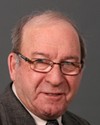Thank you.
We'll go on to the Bloc and Mr. Lévesque.
Evidence of meeting #34 for Indigenous and Northern Affairs in the 39th Parliament, 2nd session. (The original version is on Parliament’s site, as are the minutes.) The winning word was 2006.
A recording is available from Parliament.
Liberal

Yvon Lévesque Bloc Abitibi—Baie-James—Nunavik—Eeyou, QC
Ladies and gentlemen, thank you for being here this afternoon.
I am holding a report on the aboriginal population compared to the non-aboriginal population for Canada as a whole. I would like to know whether you have a breakdown of Métis, Inuit and Indian populations, by province.
Director, Social and Aboriginal Statistics Division, Statistics Canada
No, that is not part of today's presentation. But our publications contain a great deal of information on that issue.
Bloc

Yvon Lévesque Bloc Abitibi—Baie-James—Nunavik—Eeyou, QC
Am I wrong in saying that the number of aboriginal people in Quebec amounts to some 9% of all aboriginal people in Canada?
Director, Social and Aboriginal Statistics Division, Statistics Canada
In Quebec?
Bloc

Yvon Lévesque Bloc Abitibi—Baie-James—Nunavik—Eeyou, QC
Yes, in Quebec, compared to the rest of Canada.
Director, Social and Aboriginal Statistics Division, Statistics Canada
The figure is 1%. That information is provided on slide 8.
Bloc

Yvon Lévesque Bloc Abitibi—Baie-James—Nunavik—Eeyou, QC
So if I understand correctly, aboriginals amount to 1% of the Quebec population.
Director, Social and Aboriginal Statistics Division, Statistics Canada
Yes, that is correct.
Bloc

Yvon Lévesque Bloc Abitibi—Baie-James—Nunavik—Eeyou, QC
I would like to know what percentage of the total aboriginal population in Canada the Quebec aboriginal population represents. Is it about 9%?
Director, Social and Aboriginal Statistics Division, Statistics Canada
I don't have that figure.
Bloc

Yvon Lévesque Bloc Abitibi—Baie-James—Nunavik—Eeyou, QC
There is a significant funding problem relating to housing and education in Quebec. We have problems in persuading students to complete their studies, because they have trouble with their teachers. The teachers, who are generally white, go to work on the reserves. The reserves have the responsibilities that are normally entrusted to school boards, and pay equity has also been an issue, as have working conditions. Unfortunately, aboriginal communities put pressure on the teachers because funding is insufficient.
Do you have any projections or reports on that?
Director, Social and Aboriginal Statistics Division, Statistics Canada
Are you talking about funding?
Bloc

Yvon Lévesque Bloc Abitibi—Baie-James—Nunavik—Eeyou, QC
I am talking about the percentage of funding, of the money, allocated to education.
Director, Social and Aboriginal Statistics Division, Statistics Canada
No, but perhaps my colleagues... I don't know.
Bloc

Yvon Lévesque Bloc Abitibi—Baie-James—Nunavik—Eeyou, QC
The census data also indicate that the lack of housing among aboriginal people, particularly on reserves, is catastrophic. Has anything improved in the reserves since 2006? We noted a slight improvement between 1996 and 2006. Have there been any improvements on the reserves since 2006?
Director, Social and Aboriginal Statistics Division, Statistics Canada
We don't have the data since then to look at. It's really the census that is recording this.
Senior Research Manager, Research and Analysis Directorate, Department of Indian Affairs and Northern Development
It's a bit early to establish whether there have been improvements or not. When you talk about the improvements noted in 2006, you refer to analyses we had put forward some two years ago on the community wellness index, which comprises a housing component. There was a significant improvement in housing conditions then. That indicator needs to be followed. This winter, we will again be in a position to compare new figures with the 2006 data. We will see whether there has been any improvement in housing, education, the labour market and income between 2001 and 2006.
Bloc

Yvon Lévesque Bloc Abitibi—Baie-James—Nunavik—Eeyou, QC
Do you do projections, for example on what housing will be required, taking into account the birth rate on reserves and in the towns? In urban settings, the problem may be different, but it is easier to follow in the reserves.
Senior Research Manager, Research and Analysis Directorate, Department of Indian Affairs and Northern Development
Yes, and as I was explaining a little earlier on, we currently have a major research project underway with CMHC and the people responsible for housing at the Department of Indian Affairs and Northern Development Canada. The project is intended to assess the current housing needs, because there is overlap, that is to say that several families live in a single home. There is also overpopulation. It is also targeting the next 25 years both on and off reserve, for a status Indian, non status Indians, Métis and the Inuit. It is a very significant needs analysis project.
Bloc

Yvon Lévesque Bloc Abitibi—Baie-James—Nunavik—Eeyou, QC
In some provinces, the funding comes directly from the federal government, and in others, it comes through the province, which in turn gives the funding to first nations and Inuit people.
Senior Research Manager, Research and Analysis Directorate, Department of Indian Affairs and Northern Development
For the moment, we are not able to do an analysis of the supply. From a research perspective, we are certainly able to do an analysis of the housing demand, but a balanced analysis of supply and demand must be done, both for housing as well as for educational programs or other programs offered by the department. It is another way of approaching the supply and demand issues.
Bloc

Yvon Lévesque Bloc Abitibi—Baie-James—Nunavik—Eeyou, QC
In Ms. Badets' first report, the issue of non-status Indians' identity is discussed. How can we identify non-status Indians and how can we validate this information?
Senior Research Manager, Research and Analysis Directorate, Department of Indian Affairs and Northern Development
For non-status Indians, we can use self-identification. It is the same thing as for the Métis issue that we discussed earlier. People must answer a question on their identity. Do they identify themselves as North American Indians, as Métis or as Inuit? That is the language that was used in 2008; that is self-identification.